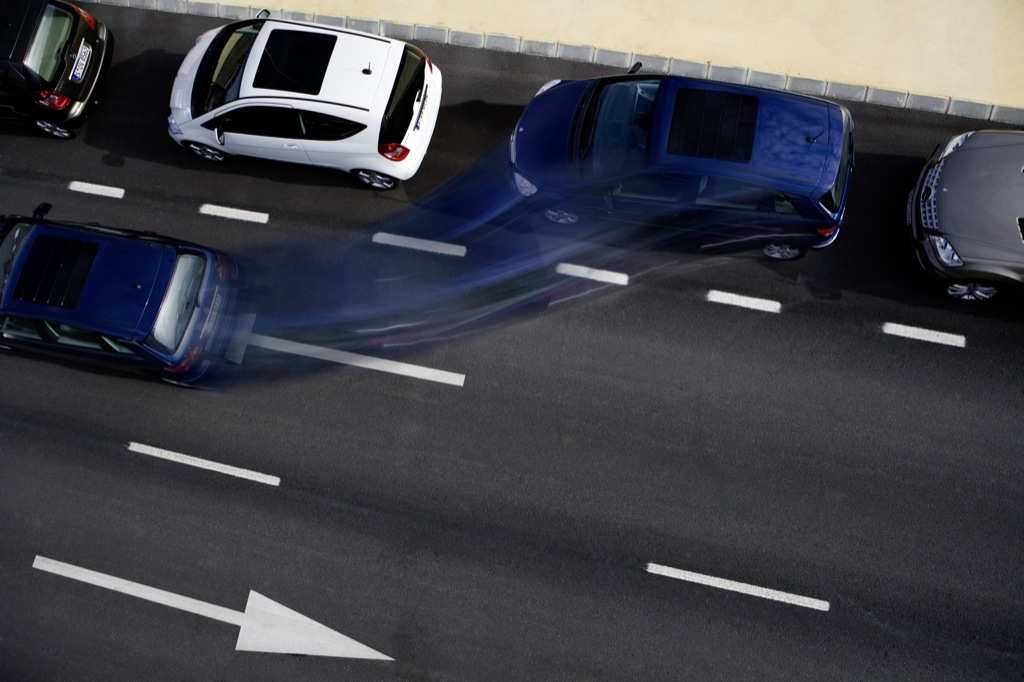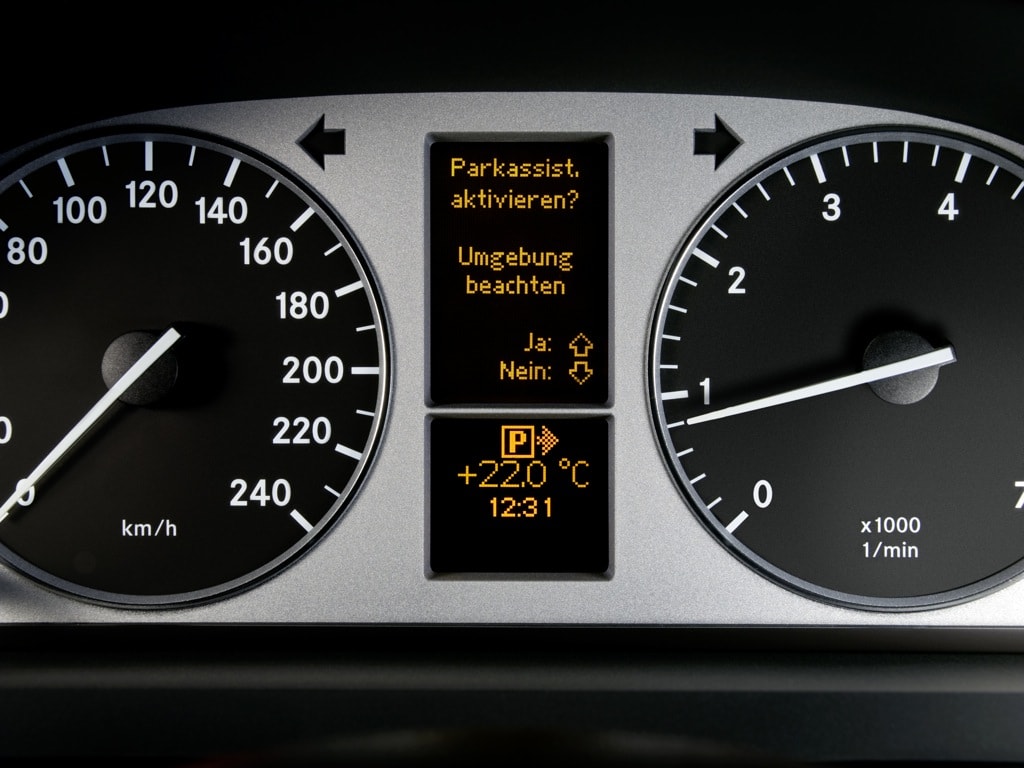Parking a car in a crowded city can prove to be your worst nightmare sometimes, especially when you're in a hurry and the only parking spot you'll find is on Mars. Sometimes, fortune may smile upon you too and you luckily discover a tiny spot to leave your car while shopping. Unfortunately, parallel parking has always been an incredibly difficult task for a shocking big number of drivers, especially for women (no misogynist here), so squeezing your car into such a tiny place could take up to several minutes.
Fortunately for all drivers who hoped to do parallel parking as rare as possible, automakers around the world aimed to benefit from this, let's say, ineptitude of some drivers: they developed the so-called self-parking cars – regulars cars equipped with an advanced technology that automatically parks the automobile for you.
No action required for such a car, despite the fact that some systems ask the driver to press the brake or the throttle and to shift to driver and/or reverse.
Which are the common moves a driver has to make to park his car? First of all, he has to find a free spot. One the parking space is found, the driver stops near (usually at the left of) the car in front of it. After turning the steering wheel to the proper direction to get into the curb, he backs into the space slowly until his front wheels are almost near the rear end of the adjacent car. After adjusting the direction to squeeze the front side of the car into the parking space, the driver continues to back into the curb. Slight readjustments could be done after that, with most drivers pulling forward and backwards to correct the position.
Yep, this sound fairly complicated, even though some people do it all in a matter of seconds. Well, the self-parking cars we were talking about do all of these quick and easy, with no parking skills required to the drivers. So, how do they actually work?
It's simple. Once the driver starts looking for a parking spot, he activates the function (there's no certain name for it, most automakers codenamed the system as they chose to). Once a suitable place is found (the system automatically check for enough parking space by comparing the available space with the car dimensions) the driver has to stop in line with the other parked car. After the driver shifts in reverse mode, the system takes control over the steering wheel and asks the driver to press the throttle. The function automatically adjust the steering wheel to get close to car in the back. The driver is then asked to shift in drive and the system pulls the steering wheel to adjust the position in the parking slot.
Please note that the whole procedure may vary by car model, manufacturer and transmission system. For example, instead of warning signals, the car may actually use a real voice system that informs you about the next move the car is going to make. This way, you could know when you're ready to shift in reverse or drive.
In addition, some older systems take full control of the car, including the throttle and the brake pedal. That's why you can easily get off the car and watch is while it is parking itself in the selected area.
You may be wondering how is this possible. Well, the car equipped with such a system usually include a large number of sensors which send signals from all sides of the car. This way, the function automatically discovers the adjacent obstacles and calculates the distance to them. More importantly, the steering wheel is electronically controlled using the power steering system but only based on information received from the aforementioned sensors.
A few other and more-advanced car models are even more high-tech than this. The best instance is represented by the last-generation (and a bit more expensive) cars which mostly rely on a high-quality camera installed in the back side of the car. The driver is able to view on an on-board monitor what happens behind the car and can oversee the parking maneuver. The self-parking system is now based on lasers which, just like sensors, sends signal to the adjacent obstacles and calculates the distance to them to safely park the car without hitting them.
In case you're wondering which was the first car manufacturer to introduce such a system, you should probably know that Volkswagen rolled out in 1992 the Futura concept car featuring the so-called IRVW (Integrated Research Volkswagen). The package also included a self-parking system that automatically parked the car, with no contribution from the driver. The whole system was at that time controlled by a larger computer unit, similar to a personal computer, installed in the trunk. However, Toyota was the first company to introduce the system on a mass-produced model, with the 2003 Toyota Prius hybrid to offer it to Japanese buyers. Models providing self-parking features are now produced by several automakers, in various regions around the world.
Fortunately for all drivers who hoped to do parallel parking as rare as possible, automakers around the world aimed to benefit from this, let's say, ineptitude of some drivers: they developed the so-called self-parking cars – regulars cars equipped with an advanced technology that automatically parks the automobile for you.
No action required for such a car, despite the fact that some systems ask the driver to press the brake or the throttle and to shift to driver and/or reverse.
Which are the common moves a driver has to make to park his car? First of all, he has to find a free spot. One the parking space is found, the driver stops near (usually at the left of) the car in front of it. After turning the steering wheel to the proper direction to get into the curb, he backs into the space slowly until his front wheels are almost near the rear end of the adjacent car. After adjusting the direction to squeeze the front side of the car into the parking space, the driver continues to back into the curb. Slight readjustments could be done after that, with most drivers pulling forward and backwards to correct the position.
Yep, this sound fairly complicated, even though some people do it all in a matter of seconds. Well, the self-parking cars we were talking about do all of these quick and easy, with no parking skills required to the drivers. So, how do they actually work?
It's simple. Once the driver starts looking for a parking spot, he activates the function (there's no certain name for it, most automakers codenamed the system as they chose to). Once a suitable place is found (the system automatically check for enough parking space by comparing the available space with the car dimensions) the driver has to stop in line with the other parked car. After the driver shifts in reverse mode, the system takes control over the steering wheel and asks the driver to press the throttle. The function automatically adjust the steering wheel to get close to car in the back. The driver is then asked to shift in drive and the system pulls the steering wheel to adjust the position in the parking slot.
Please note that the whole procedure may vary by car model, manufacturer and transmission system. For example, instead of warning signals, the car may actually use a real voice system that informs you about the next move the car is going to make. This way, you could know when you're ready to shift in reverse or drive.
In addition, some older systems take full control of the car, including the throttle and the brake pedal. That's why you can easily get off the car and watch is while it is parking itself in the selected area.
You may be wondering how is this possible. Well, the car equipped with such a system usually include a large number of sensors which send signals from all sides of the car. This way, the function automatically discovers the adjacent obstacles and calculates the distance to them. More importantly, the steering wheel is electronically controlled using the power steering system but only based on information received from the aforementioned sensors.
A few other and more-advanced car models are even more high-tech than this. The best instance is represented by the last-generation (and a bit more expensive) cars which mostly rely on a high-quality camera installed in the back side of the car. The driver is able to view on an on-board monitor what happens behind the car and can oversee the parking maneuver. The self-parking system is now based on lasers which, just like sensors, sends signal to the adjacent obstacles and calculates the distance to them to safely park the car without hitting them.
In case you're wondering which was the first car manufacturer to introduce such a system, you should probably know that Volkswagen rolled out in 1992 the Futura concept car featuring the so-called IRVW (Integrated Research Volkswagen). The package also included a self-parking system that automatically parked the car, with no contribution from the driver. The whole system was at that time controlled by a larger computer unit, similar to a personal computer, installed in the trunk. However, Toyota was the first company to introduce the system on a mass-produced model, with the 2003 Toyota Prius hybrid to offer it to Japanese buyers. Models providing self-parking features are now produced by several automakers, in various regions around the world.


